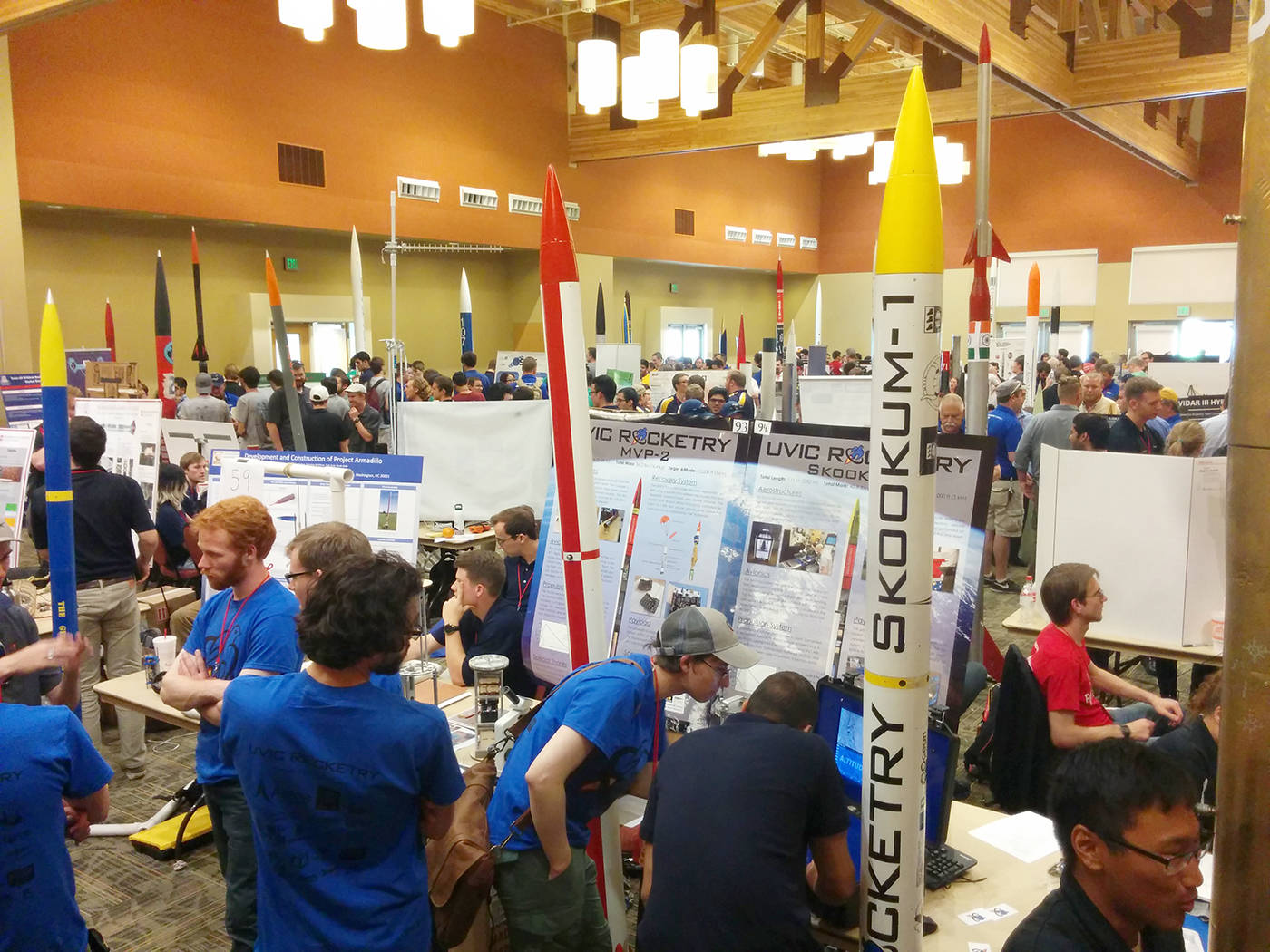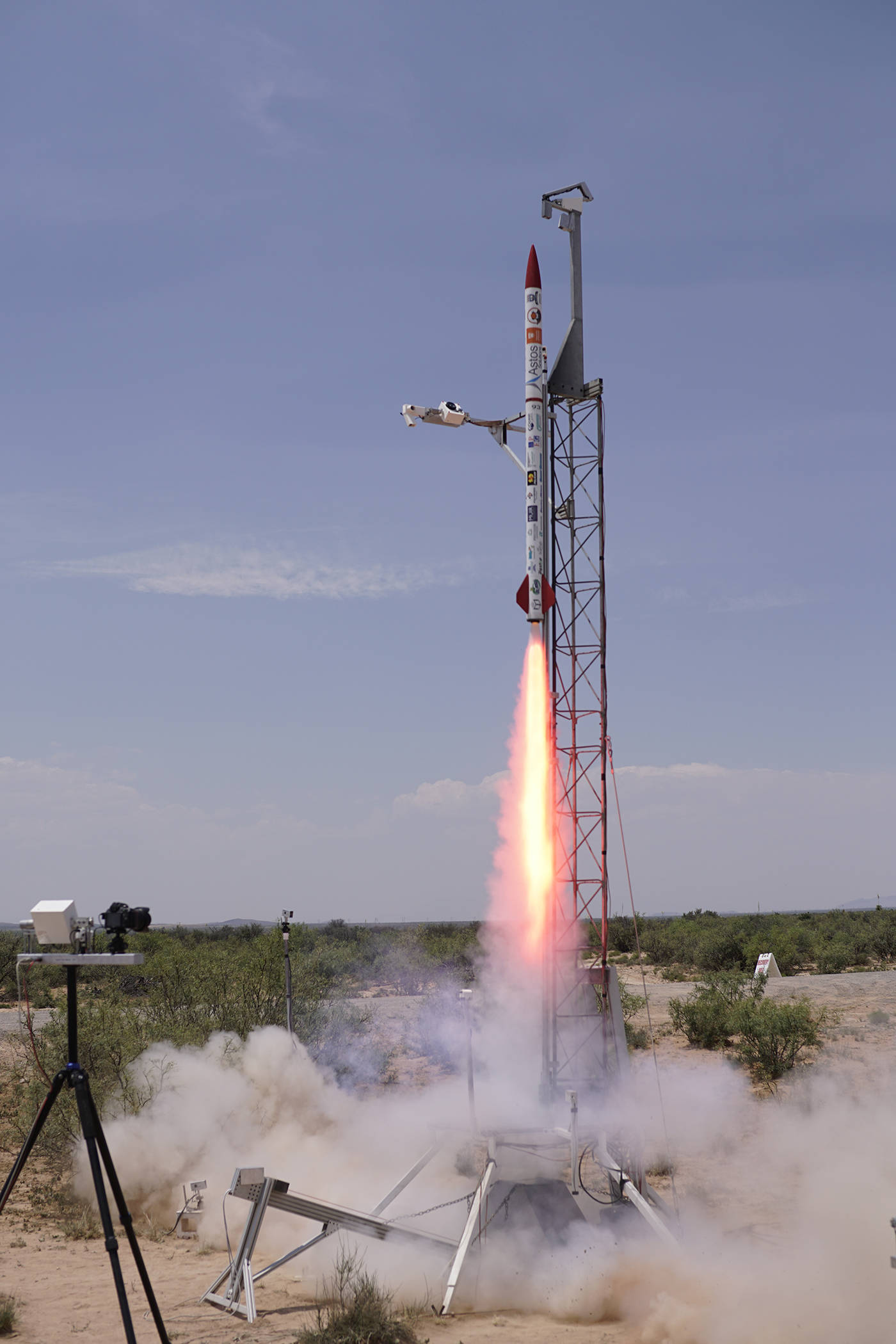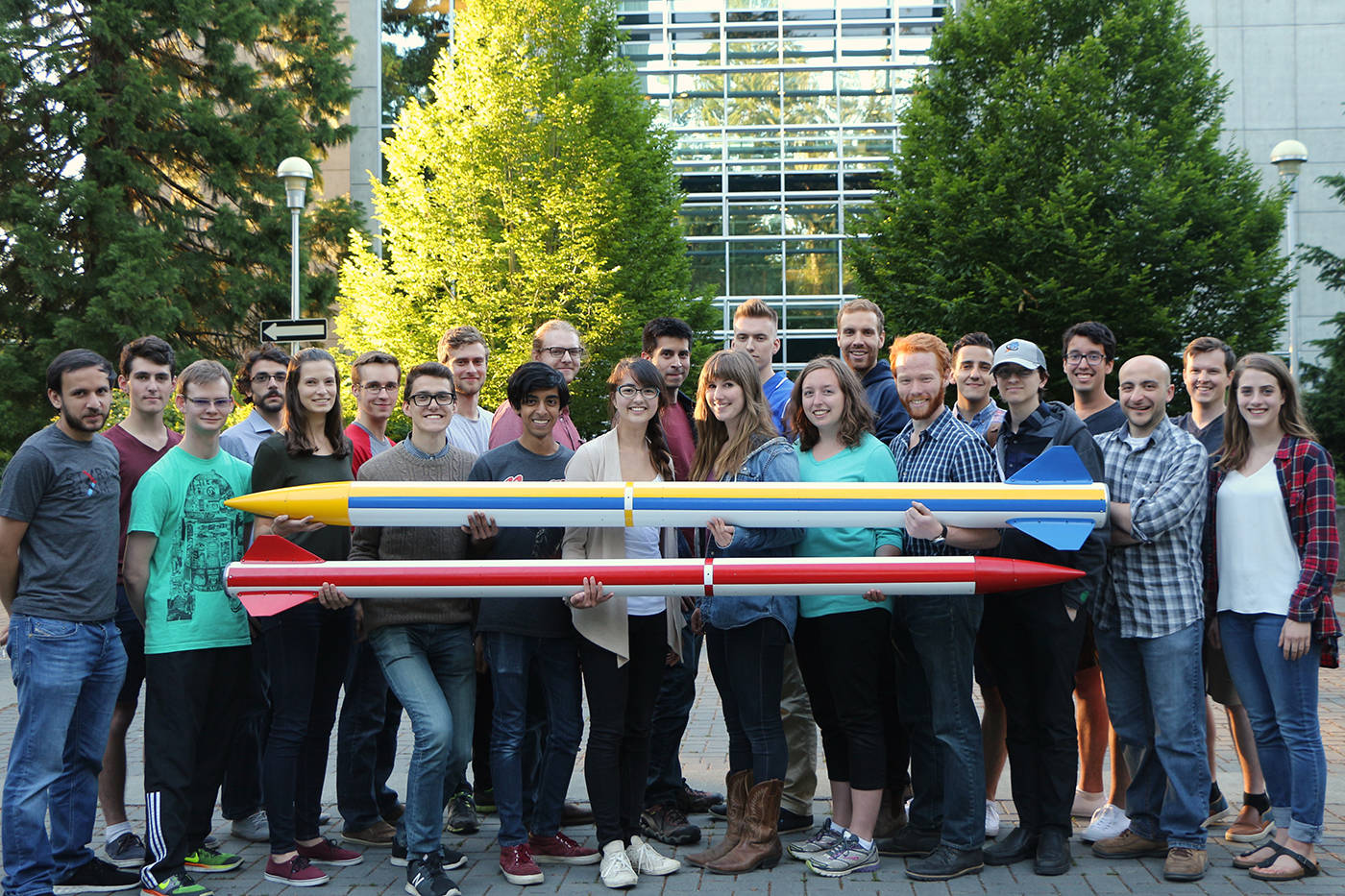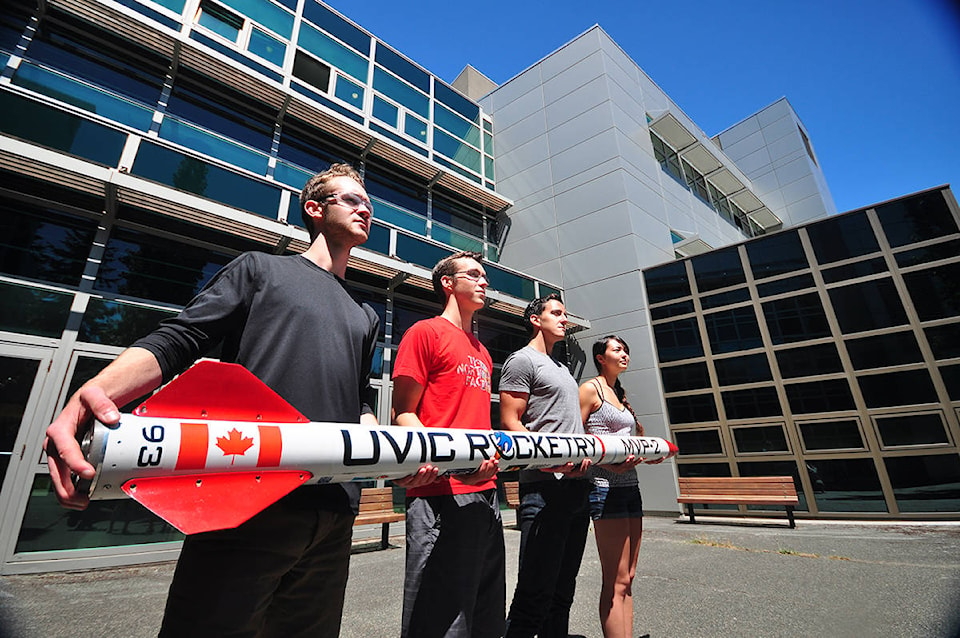Many of us who grew up with Star Trek, Star Wars, 2001: A Space Odyssey and Alien, among others, know the immense urge to explore the stars beyond our own limited realm, perhaps even find civilizations out there other than our own.
Sadly, we are no closer to figuring out a warp drive, or a ship that can carry men and women hundreds of light years away into space. We do, however, have the bright and determined minds that will take us there eventually.
What began two years ago as a degree project for mechanical engineering students at the University of Victoria (Capstone Project), today is the UVic Rocketry Club. It’s one of Canada’s fastest-growing and prolific clubs of its kind in advancing and researching development of rockets.
The crew, made up of 30 or so students from various fields, recently came back from the Intercollegiate Rocket Engineering Competition in at Spaceport America in Las Cruces, New Mexico, where they launched MVP-2 and SKOOKUM-1, both capable of reaching 10,000 feet or more.
They placed third out of 44 teams.
“We were happy how well our rocket launched, it just went straight up and then straight down… there were 15 Canadian teams out of 91 teams, and Canadians cleaned out almost half the awards. We really came together,” said Malokai Vandas, one of the key brains involved with the rocket’s propulsion system.
How the rocket got back down in one piece is Shannon Dawson’s specialty. She passionately took the lead on the safe recovery of such craft.
“Our job is making sure that when rocket goes up, it doesn’t come back down really fast,” she said, highlighting the importance of a good recovery. “There were a few rockets in the competition that came down without a parachute, just pieces falling from the sky.”
Landing an object travelling at thousands of miles an hour is no easy feat, as Dawson came to find out. So she developed a dual parachute system; a small one, called a drogue chute, which deploys right at the top of the arc and slows it down enough for the main parachute to deploy later at 1,500 ft.
“Reason for the two parachutes is that if you start with a big one up top, then you’ll be waiting a long time,” she laughed.
The goal at some point is to create a multi-stage rocket, much like those of the Apollo, but it’s baby steps up to that point.
Having a pool of bright minds working together leads to extraordinary results, notably the team’s Payload Challenge (a scientific experiment, or something that the rocket does) which awed judges at the recent competition.
Taking the lead on this was Phil Sharikov, another mechanical engineering student who worked closely with the club’s microbiologist to develop a UV sterilization test that would kill bacteria on a rocket or spacecraft so that it doesn’t contaminate any new world it encounters, such as Mars, or one of Jupiter’s moons, Europa.
After all, asking how human spacecraft is going to impact another alien world’s ecosystem hasn’t been fully considered.
“We have pretty good standards in place for that, but they’re not perfect. Right now there are still 30 to 40,000 bacteria spores allowed when the spacecraft actually sets out,” Sharikov said, adding that they decided to find the method that would essentially get that number down as close to zero as possible.
“So instead of thousands of bacteria, it would be in the hundreds… we used ultraviolet light, because it will damage bacteria DNA and bacteria undergo stresses during launch when the rocket is accelerating at 10 to 15 Gs.”
Next step is to develop a hybrid rocket, one that uses both solid fuel and liquid fuel for propulsion.
“We want to build our own system,” said Keagan Shedden, one of the club’s key brains on the rocket’s “engine” adding that the team is planning to test a new hybrid later this summer or fall, which will be capable of reaching 30,000 ft.
With somewhat-limited resources on what the club can do, members often resort to simply building the parts themselves, using carbon fibre, aluminum or other materials that are readily available.
“We have limited resources with what we do, so that makes us better in terms of working with what we have,” Shedden said.
All four students hope to keep the club’s legacy going and attract even more members to the cause, with the goal to perhaps establish a rocket industry in Canada as well.
“We are leading a Canadian cause to build rockets,” Sharikov said. “Most of the rocket stuff goes down in the States or in places we have no access to such as China and Russia.”
In addition, the U.S.’s International Trade and Arms Regulations prohibits anyone who is not an American citizen or resident from working in the rocket business.
“We want to build rockets, we want to get into the aerospace industry, so if we can change part of the ITAR agreement or get the Canadian government to invest in this field, we’ll do what it takes, because this is what we want to do.”
octavian.lacatusu@oakbaynews.com



